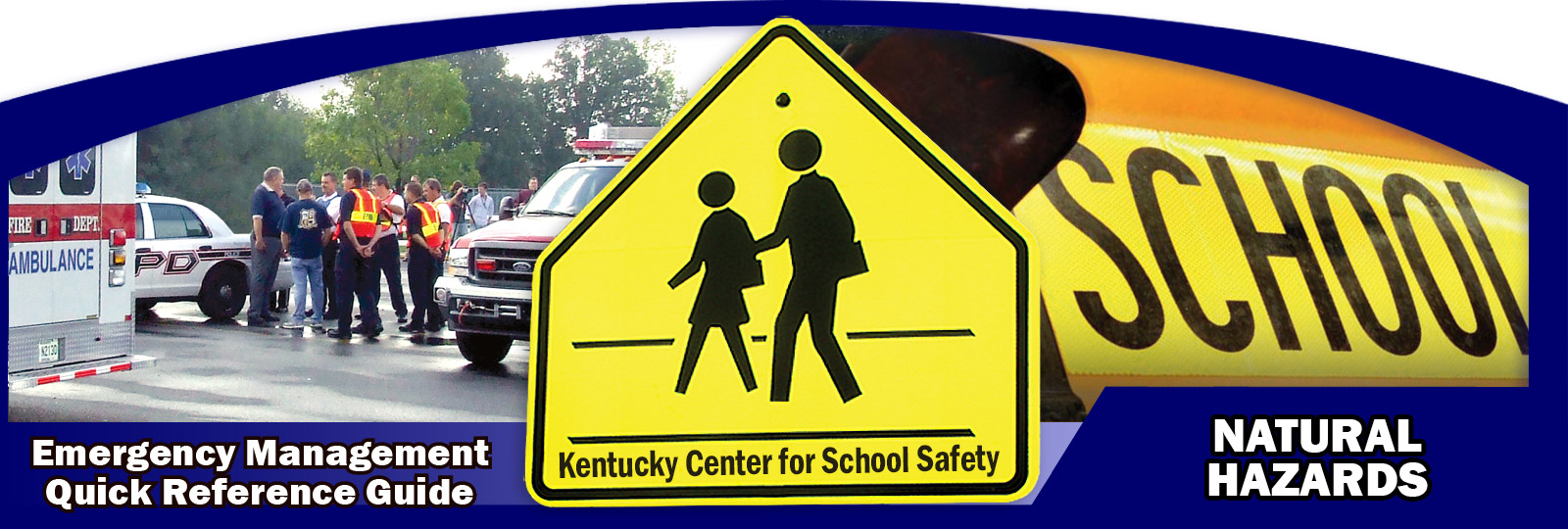UNIVERSAL PROCEDURES
Universal Emergency Procedures are a set of standard, clear directives that may be implemented across a variety of emergency situations. When an emergency begins, the principal, as Incident Commander, will decide which Universal Emergency Procedures to implement, based on the situation.
There are six basic procedures which can be utilized in responding to various emergencies:
1) Evacuation, 2) Reverse Evacuation, 3) Severe Weather Safe Area, 4) Shelter in Place, 5) Lockdown, 6) Drop, Cover and Hold
1. EVACUATION
(For use when conditions outside are safer than inside)
When announcement is made or alarm sounded:
- Take the closest and safest way out as posted (use secondary route if primary route is blocked or hazardous)
- Take class roster for student accounting
- Assist those needing special assistance
- Do not stop for student/staff belongings
- Go to designated Assembly Area
- Check for injuries
- Take attendance; report according to Student Accounting and Release procedures
- BE QUIET!
- Wait for further instructions
2. REVERSE EVACUATION
(For use when conditions inside are safer than outside)
When the announcement is made:
- Move students and staff inside as quickly as possible
- Assist those needing special assistance
- Report to classroom
- Check for injuries
- Take attendance; report according to Student Accounting and Release procedures
- BE QUIET!
- Wait for further instructions
3. SEVERE WEATHER SAFE AREA
(For use in severe weather emergencies)
When announcement is made or alarm sounded:
- Take the closest, safest route to shelter in designated safe areas (use secondary route if primary route is blocked or dangerous)
- Occupants of portable classrooms shall move to the main building to designated safe areas
- Take class roster for student accounting
- Take attendance; report according to Student Accounting and Release procedures
- Assist those needing special assistance
- Do not stop for student/staff belongings
- Close all doors
- Remain in safe area until the "all clear" is given
- BE QUIET!
- Wait for further instructions
4. SHELTER IN PLACE
(For use in chemical release scenarios)
When the announcement is made:
- Turn off HVAC System
- Students are to be cleared from the halls immediately and to report to nearest available classroom or other designated location
- Assist those needing special assistance
- Close and tape all windows and doors and seal the gap between bottom of the door and the floor (chemical release)
- Take attendance; report according to Student Accounting and Release procedures
- Do not allow anyone to leave the classroom
- Stay away from all doors and windows
- BE QUIET!
- Wait for further instructions
5. LOCKDOWN
(For use to protect building occupants from potential dangers in the building)
Note: school-specific lockdown procedures should be developed by school officials and local law enforcement officials. Please see "Considerations When Developing a School Lockdown Policy" for additional information. See kycss.org/emergency-procedures/lockdown/
When the announcement is made:
- Students are to be cleared from the halls immediately and to report to nearest available classroom
- Assist those needing special assistance
- Close and lock all windows and doors and do not leave for any reason
- Stay away from all doors and windows and move students to interior walls and drop
- BE QUIET!
- Wait for an official to open the door
6. DROP, COVER AND HOLD
(For use in earthquake or other imminent danger to building or
immediate surroundings)
When the command "Drop" is made:
- DROP - to the floor, take cover under a nearby desk or table and face away from the windows
- COVER - your eyes by leaning your face against your arms
- HOLD - on to the table or desk legs, and maintain present location/position
- Assist those needing special assistance
- BE QUIET!
- Wait for further instructions
